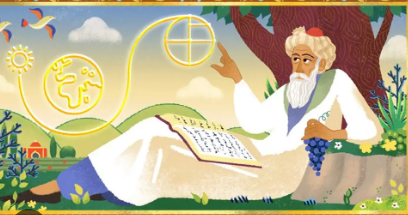Omar Khayyam and the Solar Calendar
A Masterpiece of Medieval Astronomy
Omar Khayyam, a polymath renowned for his contributions to
poetry, mathematics, and astronomy, made significant strides in the field of
calendar reform during the 11th and 12th centuries. One of his most remarkable
achievements was the calculation and development of the Jalali calendar,
a solar calendar that surpassed the accuracy of the Julian calendar and even rivalled
the Gregorian calendar introduced centuries later. The Jalali calendar, which
Khayyam and his team developed, was based on meticulous observations of the
Sun’s position, the Earth's axial tilt, and the celestial markers such as the
Pleiades star cluster.
The Observations in Isfahan
Omar Khayyam’s observatory in Isfahan, the heart of the
Seljuk Empire, served as the epicentre for his astronomical studies. The
location of Isfahan provided a strategic geographical advantage due to its
relatively clear skies and minimal light pollution, making it ideal for celestial
observations. At this observatory, Khayyam established a meridian line—a
critical reference point for his observations. A meridian line is an imaginary
line that runs from the north to the south pole, passing directly overhead at a
particular location. By marking this line on the ground in his observatory,
Khayyam could accurately measure the Sun's altitude at noon throughout the
year.
The Role of the Sun in the Jalali
Calendar
The primary focus of Khayyam's work was the solar year,
which he defined as the time it takes for the Sun to return to the same
position relative to the stars, particularly the Pleiades cluster. The tropical
year, or the time it takes for the Earth to complete one orbit around the Sun
and for the Sun to return to the same position in the sky relative to the
vernal equinox, was of particular interest. This year is shorter than the
sidereal year because of the precession of the equinoxes—a slow, cyclic wobble
in Earth's rotation axis.
Khayyam meticulously measured the Sun's angle at noon on the
meridian line during key points of the year, particularly during the solstices
and equinoxes. These observations allowed him to track the Sun's apparent
motion along the ecliptic, the path that the Sun appears to follow across the
sky due to Earth's orbit. By observing the Sun's altitude at different times of
the year, Khayyam could determine the exact length of the solar year with
remarkable precision.
The Significance of the Pleiades
At night, Khayyam would turn his attention to the stars,
particularly the Pleiades cluster, a group of stars in the constellation
Taurus. The Pleiades have been used by many ancient cultures as a seasonal
marker due to their prominence and visibility across the world. In Khayyam’s
calculations, the heliacal rising of the Pleiades—when the cluster first
becomes visible just before sunrise—served as a celestial indicator of the
changing seasons. This event occurs annually around the same time, and by
tracking it, Khayyam could corroborate his solar observations and ensure the
accuracy of his calendar.
Earth’s Tilt and the Tropics
One of the most sophisticated aspects of Khayyam’s work was
his understanding and utilization of Earth's axial tilt. The Earth’s axis is
tilted relative to its orbital plane by approximately 23.5 degrees, which is
responsible for the changing seasons. The tilt causes the Sun to appear higher
in the sky during the summer solstice and lower during the winter solstice, as
viewed from either the Northern or Southern Hemisphere.
Khayyam understood the significance of the Tropics of Cancer
and Capricorn, the latitudes where the Sun appears directly overhead at noon
during the summer and winter solstices, respectively. By observing the Sun’s
angle at these critical points of the year, he could calculate the Earth’s
axial tilt with impressive accuracy. This tilt directly influences the length
of the solar year and the seasonal cycle, both of which are fundamental to an
accurate solar calendar.
The Jalali Calendar: A Legacy of
Precision
Using his extensive observations and calculations, Omar
Khayyam and his team devised the Jalali calendar in 1079. This calendar
was highly accurate, with a mean year length of approximately 365.2424
days—remarkably close to the true tropical year of 365.2422 days. The Jalali
calendar was more precise than the Julian calendar, which had been widely used
until that time, and its accuracy was only marginally surpassed by the
Gregorian calendar introduced in 1582.
The Jalali calendar’s accuracy stemmed from Khayyam’s deep
understanding of the Earth’s movements and his innovative use of both solar and
stellar observations. His methods laid the groundwork for future developments
in astronomy and timekeeping, and his contributions remain a testament to the
sophistication of medieval Islamic science.
Conclusion
Omar Khayyam’s calculation of the solar calendar was a
remarkable achievement that combined observational astronomy, mathematics, and
an understanding of the Earth’s axial tilt. By carefully tracking the Sun’s
movement and utilizing the Pleiades as a celestial marker, Khayyam was able to
create a calendar that was not only precise but also a reflection of the
profound astronomical knowledge of the time. The Jalali calendar stands as a
testament to his genius, influencing the way we measure time and reminding us
of the rich history of scientific inquiry in the Persian/Islamic Golden Age.

Comments
Post a Comment